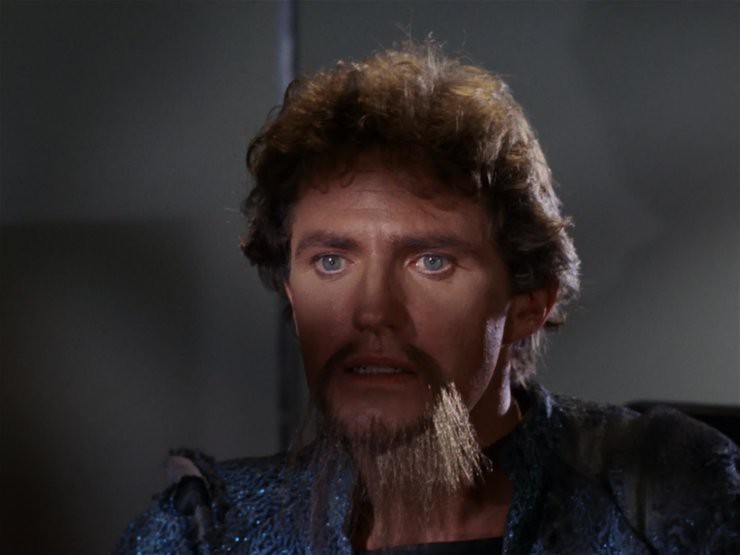“The Alternative Factor”
Written by Don Ingalls
Directed by Gerd Oswald
Season 1, Episodes 20
Production episode 6149-20
Original air date: March 30, 1967
Stardate: 3087.6
Captain’s log. The Enterprise is finishing up an orbital survey of an uninhabited planet, when they’re buffeted by some kind of force. According to Spock, for an instant the magnetic field of the solar system disappeared and the planet below had no mass—it was as if reality winked out of existence for a second. As soon as the phenomenon abated, a humanoid life sign reading appeared on the planet out of nowhere.
Kirk, Spock, and a four-person security detail beam down to investigate. They find a small, one-person ship—which, weirdly, Spock’s sensors did not pick up—and its pilot, who is ranting and raving and then faints.
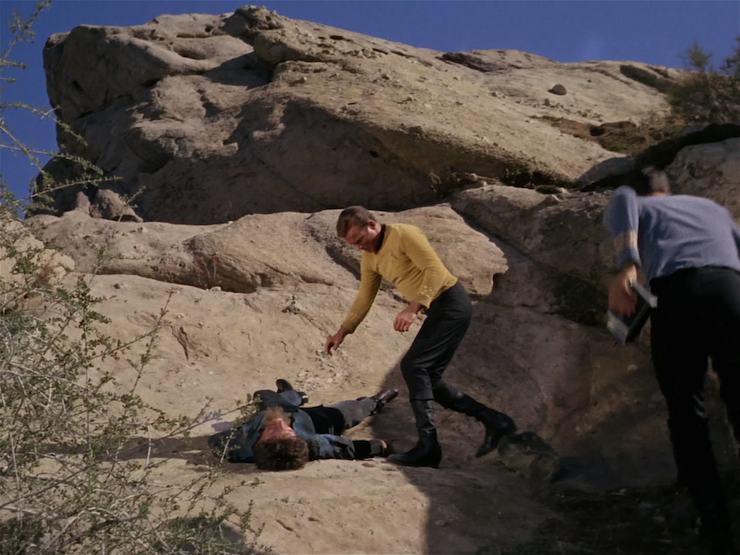
They beam him back to the ship. Lieutenant Charlene Masters reports that the dilithium crystals have been reduced in power and energy. Spock can find no further signs of disturbance, while the ship’s pilot is recovering in sickbay. Commodore Barstow reports that the phenomenon was galaxy-wide at the very least, and it was centered on the sector the Enterprise is in. The rest of Starfleet is preparing for a possible invasion and so can render no assistance, so the Enterprise is on its own to figure out what’s happening.
Kirk interviews their guest, who’s named Lazarus, and who claims to be chasing a murderer across the universe. This person—this thing—murdered his entire civilization. Lazarus was the only survivor, and also blames his enemy for the winking out of the universe.

Kirk and Lazarus beam down, where Spock and an engineer are going over Lazarus’s ship. Spock can find no sign of another life, and accuses Lazarus of lying. Before he can defend himself, Lazarus is attacked, seemingly by nothing—and then he seems to be transported to a place where everything looks like a negative image, where he and an identical form struggle. After a minute, he’s returned to the real world, claiming to have struggled with his enemy. The winking out phenomenon happened again during the struggle.
Lazarus is injured and treated by McCoy—but the cut on his forehead heals almost instantly. He goes to the mess hall and overhears Masters discussing the dilithium crystals with another engineer, while bitching about the quality of the Enterprise coffee. When Lazarus goes into the corridor, he again struggles with his enemy—and when he’s done, the wound and the bandage are back on his head.

Spock reports that the Enterprise is picking up a radiation reading, but there is no trace of any source for the radiation. Spock hypothesizes that it’s a rip in the very fabric of the universe. The dilithium crystals can apparently detect the radiation. Lazarus begs Kirk to let him have the Enterprise‘s crystals, as it’s the only way he can stop his enemy, but Kirk won’t sacrifice his ship’s power source.
Lazarus leaves the bridge in a huff; the security guard assigned to him has to wait for the next turbolift to follow. Lazarus again has a conflict with his enemy—and then the bandage is gone again. He goes to engineering, takes out Masters’s assistant, and then Masters herself while she’s talking to the captain.
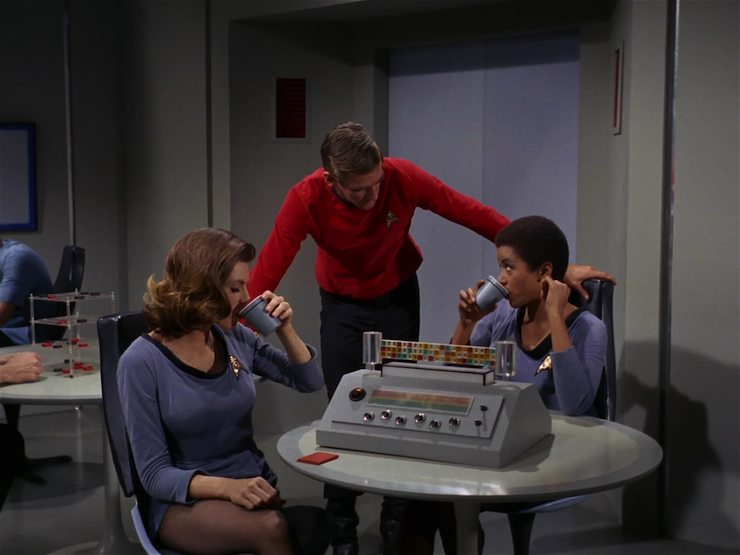
By the time they track Lazarus down, he’s got the bandage again (and his beard has thinned considerably), and two dilithium crystals are missing. Lazarus blames his enemy. Kirk orders a search of the ship, and then takes Spock and a security detail to investigate Lazarus’s ship—no sign of the crystals. Also Lazarus’s beard has gotten incredibly thick. Spock has also lost the radiation signature. They search the area on foot. For reasons passing understanding, Kirk lets Lazarus go off on his own—and he confronts his enemy again, and afterward he falls from a great height.
He’s brought to the Enterprise, where Kirk confronts him with the fact that there’s no planet at the location where he said his home world was, and there never has been. Lazarus confesses to being a time traveler, as is his enemy. They have fought across the centuries. Lazarus collapses from his injuries.
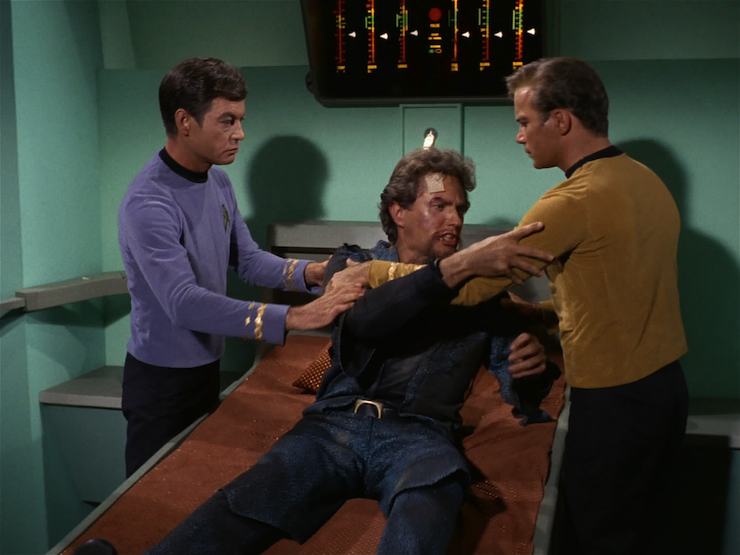
Since their instruments can’t detect the source of the radiation, Spock hypothesizes that it comes from outside their universe. Lazarus’s enemy could come from a parallel universe. Lazarus has shown two separate personalities, his wound has come and gone, and it seems obvious now that there are two different versions of Lazarus—the hole in the fabric of space they found could be a doorway between universes. Spock believes that one is a universe of matter, the other a universe of anti-matter, which is why their conflicts have winked out the universe. If allowed to go on, the universe could be destroyed.
Lazarus sabotages an engineering console, setting a fire. He uses the cover of the fire to steal dilithium crystals, then beams down to the planet, beating up the transporter chief en route. Kirk beams down to go after Lazarus, ordering Spock to follow with a security detail. Lazarus installs the crystals into his ship. Kirk enters Lazarus’s ship—
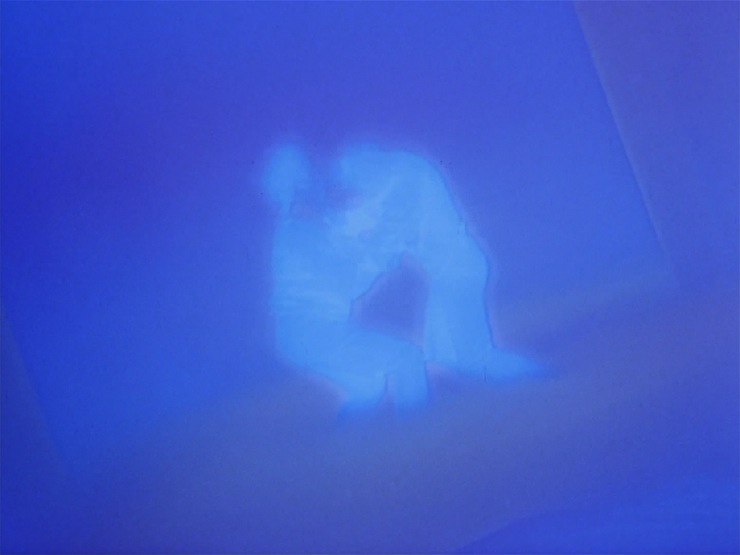
—and then finds himself in the same limbo where the Lazarus-Lazarus action has been taking place. After a few moments, he’s back on the planet, but it’s night-time and Lazarus’s ship has moved and is badly damaged. The other Lazarus, the one without the bandage, is repairing the ship.
Their fights are endangering both universes. The Lazarus from the matter universe went mad when he discovered that he had an anti-matter counterpart. The anti-matter Lazarus proposes that Kirk lure the matter Lazarus into the limbo between universes—Lazarus calls it a corridor—and then destroy Lazarus’s ship, which will also (apparently) destroy the equivalent ship in the other universe.
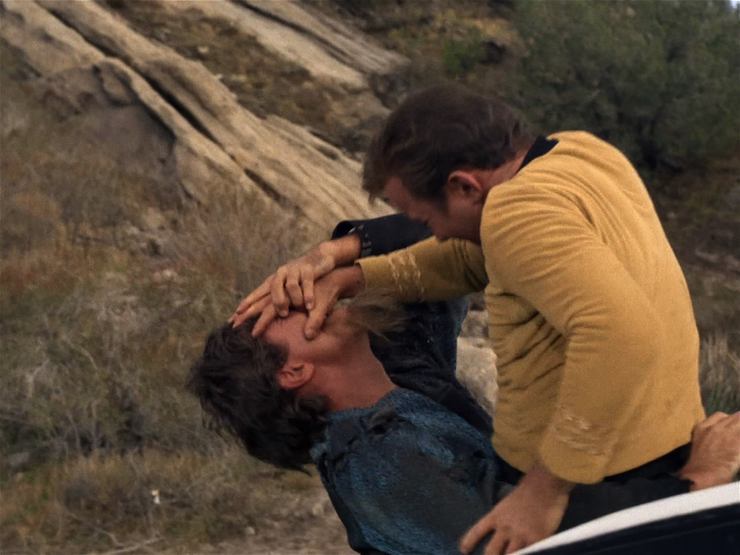
Kirk goes through to the matter universe, where Spock and the security detail have Lazarus surrounded. Kirk gets into a prolonged fistfight and then he sends Lazarus into his ship, which puts him in the corridor. The landing party beams up, and Kirk orders Leslie to destroy Lazarus’s ship. The two Lazaruses are left to fight in the corridor for all eternity.
Can’t we just reverse the polarity? It’s established that the crystals used to power ships with warp drive are dilithium crystals, retconned from the lithium crystals in “Mudd’s Women,” a change no doubt made when someone pointed out that lithium doesn’t come in crystalline form. However, the episode contradicts what was established in “The Naked Time,” to wit, that the crystals channel the power from the annihilation of matter and anti-matter. Indeed, Kirk and Spock talk as if anti-matter is theoretical in this episode, and the crystals themselves are what provide the power. This notion will never be referred to again, and henceforth it’ll be back to what “Mudd” and “Naked” set up.
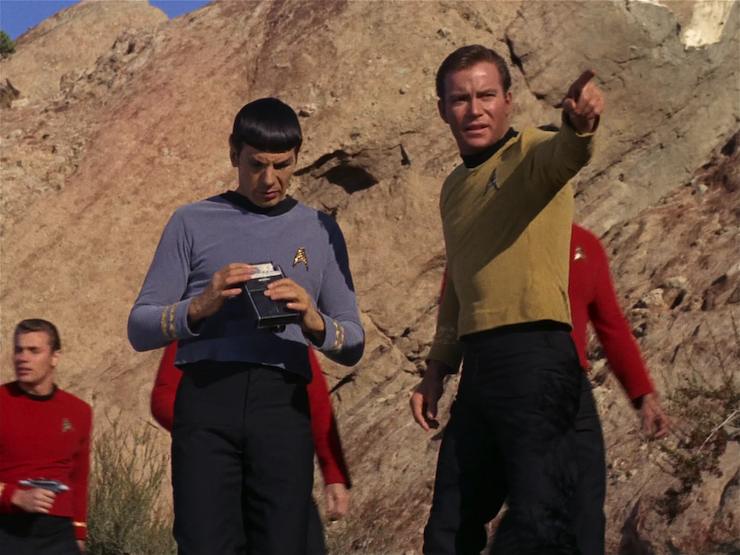
Fascinating. Leonard Nimoy very obviously had a cold the week this was filmed, as he sounds horribly stuffed-up…
I’m a doctor not an escalator. McCoy insists that the security guard in sickbay standing over Lazarus be dismissed, and then assures Kirk that Lazarus won’t leave sickbay this time. McCoy then leaves the room, and Lazarus immediately gets out of bed and leaves sickbay. Good work, Bones!
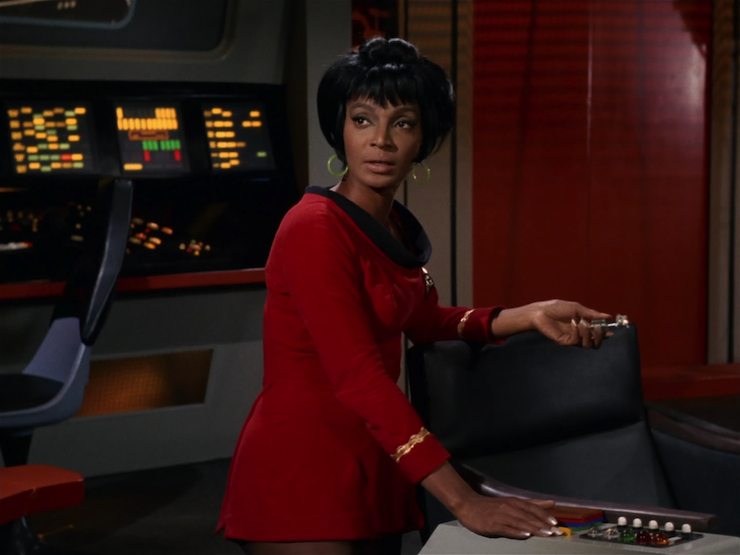
Hailing frequencies open. At one point, Uhura is standing next to the captain’s chair and using the controls on the arm of it, rather than sitting at her own console. Since they never let her command the ship, I guess she had to get her command jollies where she could. (At one point, Leslie is seen to be in command of the bridge while Kirk and Spock are away.)
Go put on a red shirt. Security actually comports themselves well, with a full detail beaming down to the planet on three different occasions (which should have happened more often), and also taking care of the fire in engineering.
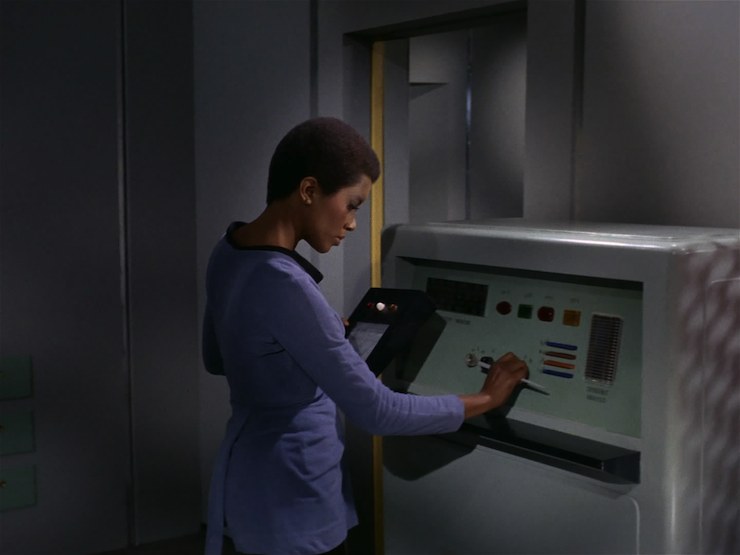
No sex, please, we’re Starfleet. Originally there was supposed to be a romance between Lazarus and Masters, but Gene Roddenberry asked for that element to be removed as it was too similar to the romance between Khan and McGivers in the upcoming “Space Seed.” The fact that it would have been a romance between a black woman and a white man may have been why this one had the kibosh put on it rather than the other.
Channel open. “I fail to comprehend your indignation, sir. I’ve simply made the logical deduction that you are a liar.”
Spock, who needs work on his indignation comprehension skills.

Welcome aboard. Robert Brown plays both iterations of Lazarus, with varying beard thickness, while Janet MacLachlan plays Masters, Arch Whiting plays her unnamed assistant, Richard Derr plays Barstow, Christian Patrick plays the transporter chief, and Eddie Paskey actually gets billing this time around as Leslie (though the character name is misspelled “Lesley” in the credits). Plus we’ve got recurring regulars DeForest Kelley and Nichelle Nichols.
Trivial matters: John D. Barrymore was supposed to play Lazarus, but he never showed up for work. This led to him being suspended by the Screen Actors Guild for six months, which meant he couldn’t work in a union production for half a year. Robert Brown was brought in to replace him at the last minute.
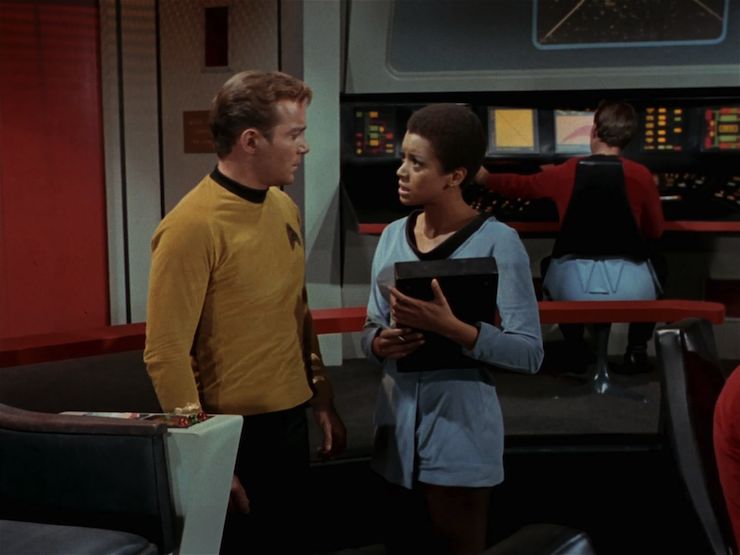
Masters wears science blue even though she’s assigned to engineering, which means she should be wearing operations red. Greg Cox’s novel No Time Like the Past established that Masters was Scotty’s protégé and she was generally left in charge of engineering whenever Scotty was on the bridge.
A different set is used for engineering, one that is never seen again, though it’s referenced in Christopher L. Bennett’s Forgotten History.
Lazarus is seen again in Jeremy Yoder’s cross-series short story “Reborn” in Strange New Worlds 10.
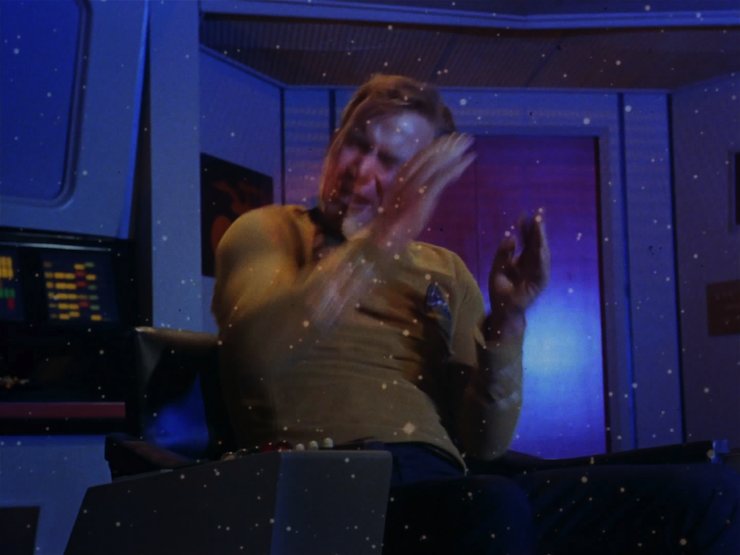
To boldly go. “Captain, the universe is safe.” My graduation present when I finished high school in 1986 was a VCR. One of the first things I wanted to do now that I owned such a device was to record all the episodes of Star Trek onto VHS tapes. At the time, the show was still being aired regularly on Channel 11 here in New York City, and I was able to put six or seven episodes on a tape (depending on whether or not I was able to edit out the commercials, which was only sometimes possible).
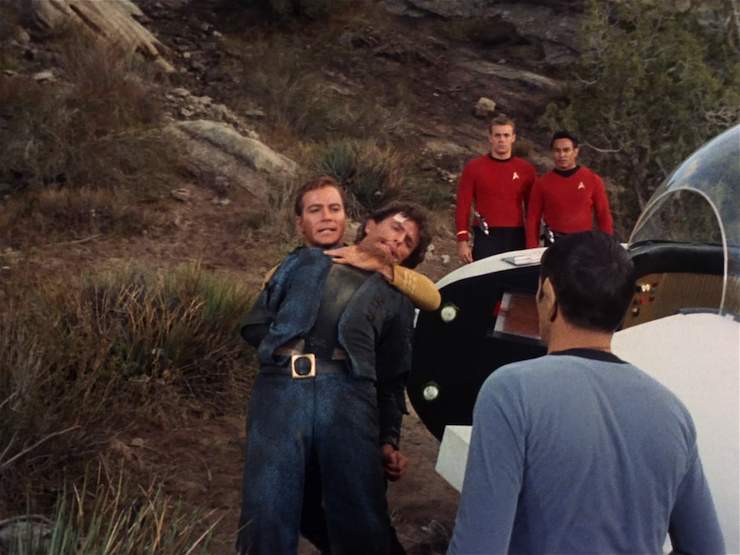
Whatever day it was in 1986 that I recorded “The Alternative Factor” onto VHS was the last time before doing this rewatch that I watched this episode. All I could recall about it thirty years later was that Lazarus’s beard was hilariously inconsistent, that Leonard Nimoy was stuffed up during it, and that it was bad.
All these things remained true, though I had forgotten just how bad it was. There is absolutely nothing in this episode that makes sense. The characters all stumble around like idiots, nobody in the main cast actually does anything until Kirk has his obligatory fistfight with matter-Lazarus. The conversations all contain leaps in logic that aren’t backed by evidence, and there’s an appalling lack of urgency given what’s actually at stake. The time travel element is dropped in out of nowhere and then completely forgotten.
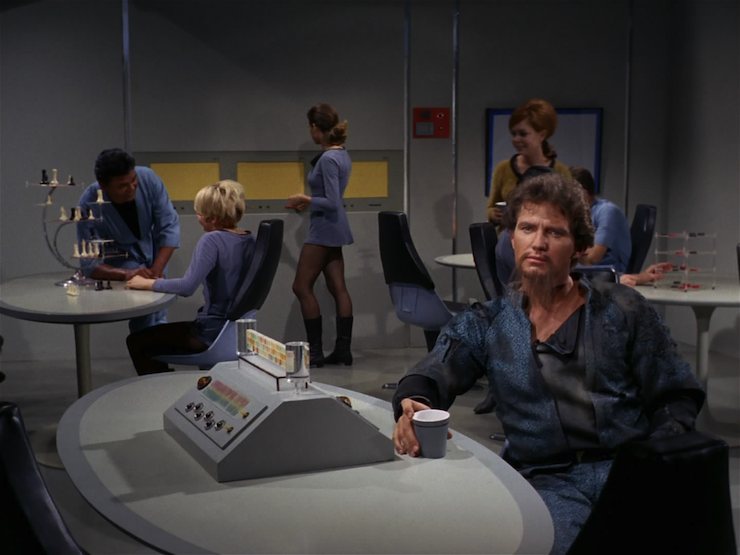
I’m willing to forgive Robert Brown’s horrible performance given that he was a last-minute replacement for John D. Barrymore, who probably didn’t show up because he read the script and decided it was worth not working for six months just to keep this monstrosity off his resumé.
It’s not surprising that this episode is so easily dismissed. Its notions on anti-matter and how the Enterprise is powered are inconsistent with every other reference to same and it’s spectacularly awful. Oh, and also there are apparently no long-term consequences to the entire universe blinking out of existence several times, which probably would have engendered a response from the other governments and beings in the galaxy…

Having said that, the episode does have one redeeming feature that deserves praise, and that’s the character of Lieutenant Charlene Masters. Given her level of responsibility, she seems to be the deputy chief engineer under Scotty, and she’s a black woman, who thinks the coffee on the Enterprise sucks. It’s truly a pity that this character didn’t have the fortune to be in a good episode, as I find myself genuinely curious about her. As it is, the episode is ranked as high as it is only due to her…
Warp factor rating: 2
Next week: “Tomorrow is Yesterday”
Keith R.A. DeCandido urges everyone to support the Kickstarter for a superhero flipbook anthology called The Side of Good/The Side of Evil, for which Keith will be writing a Super City Police Department story, and which will also have a new Furious story by Bryan J.L. Glass, as well as tales by Peter David, Jennifer K. Spendlove, Aaron Rosenberg, Robert Greenberger, James Chambers, Gail Z. Martin, John L. French, James M. Ward, Neal Levin, and Kathleen O. David. The anthology will be edited by veteran anthologist Danielle Ackley-McPhail and Between Books‘s Greg Schauer.










